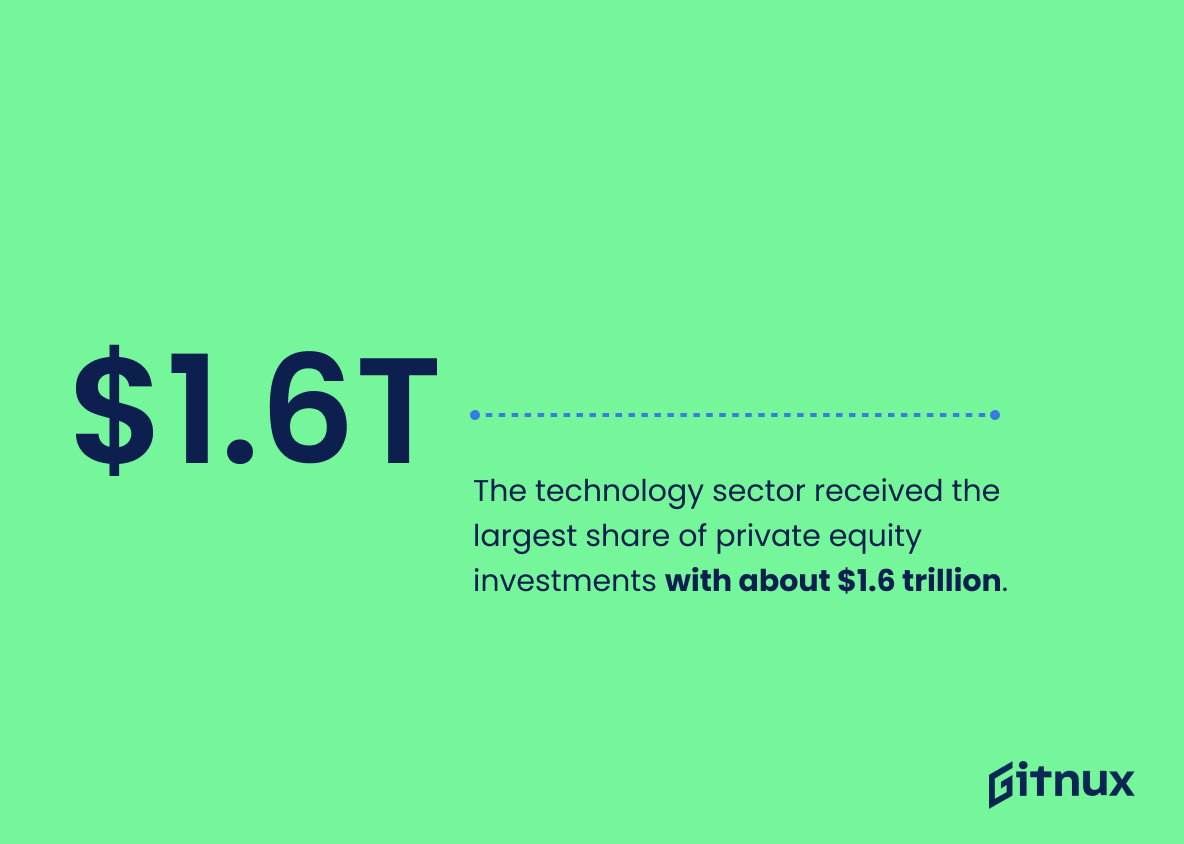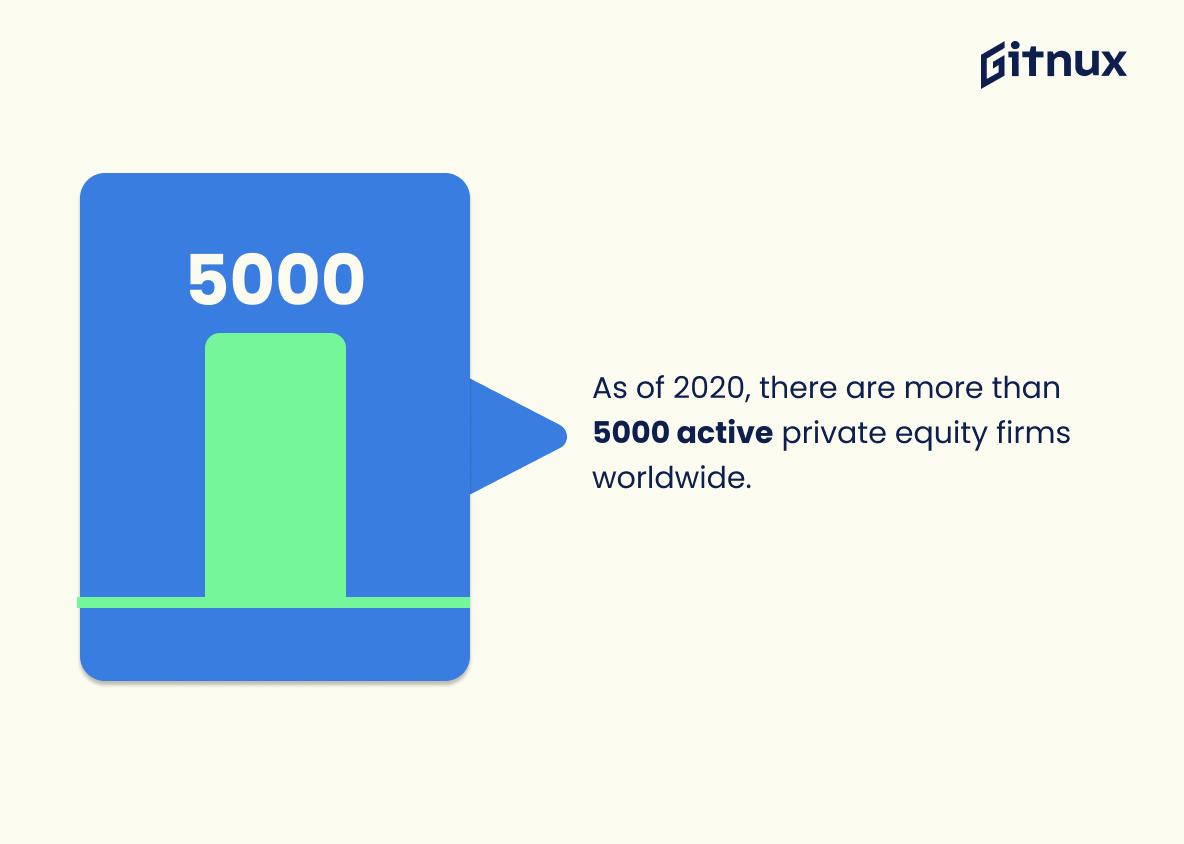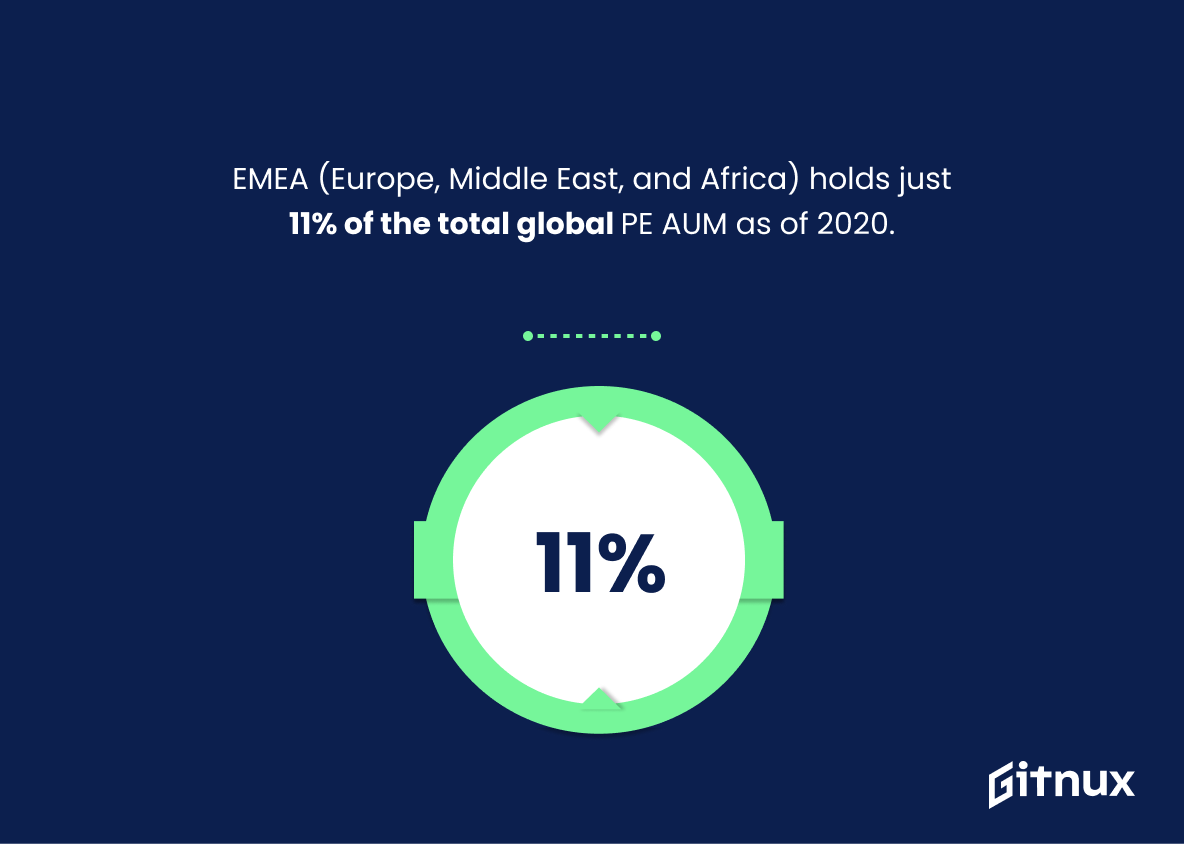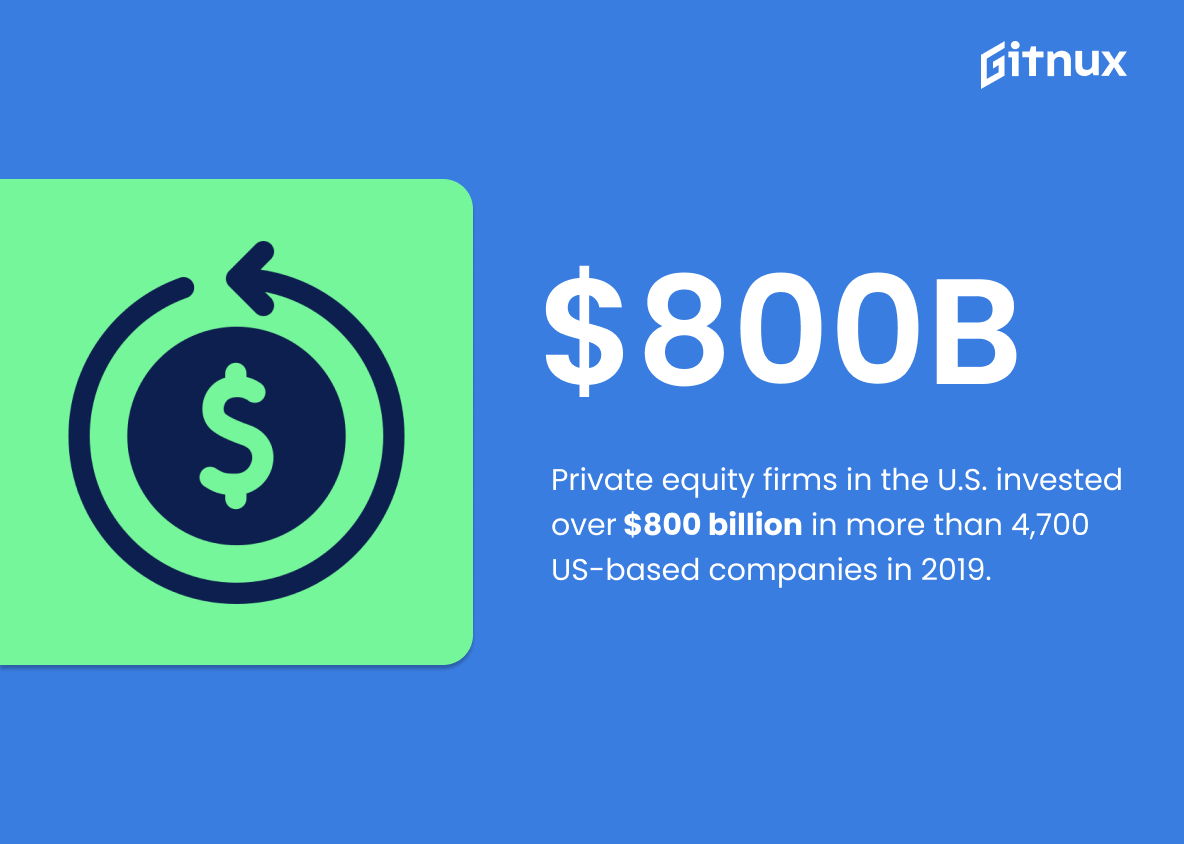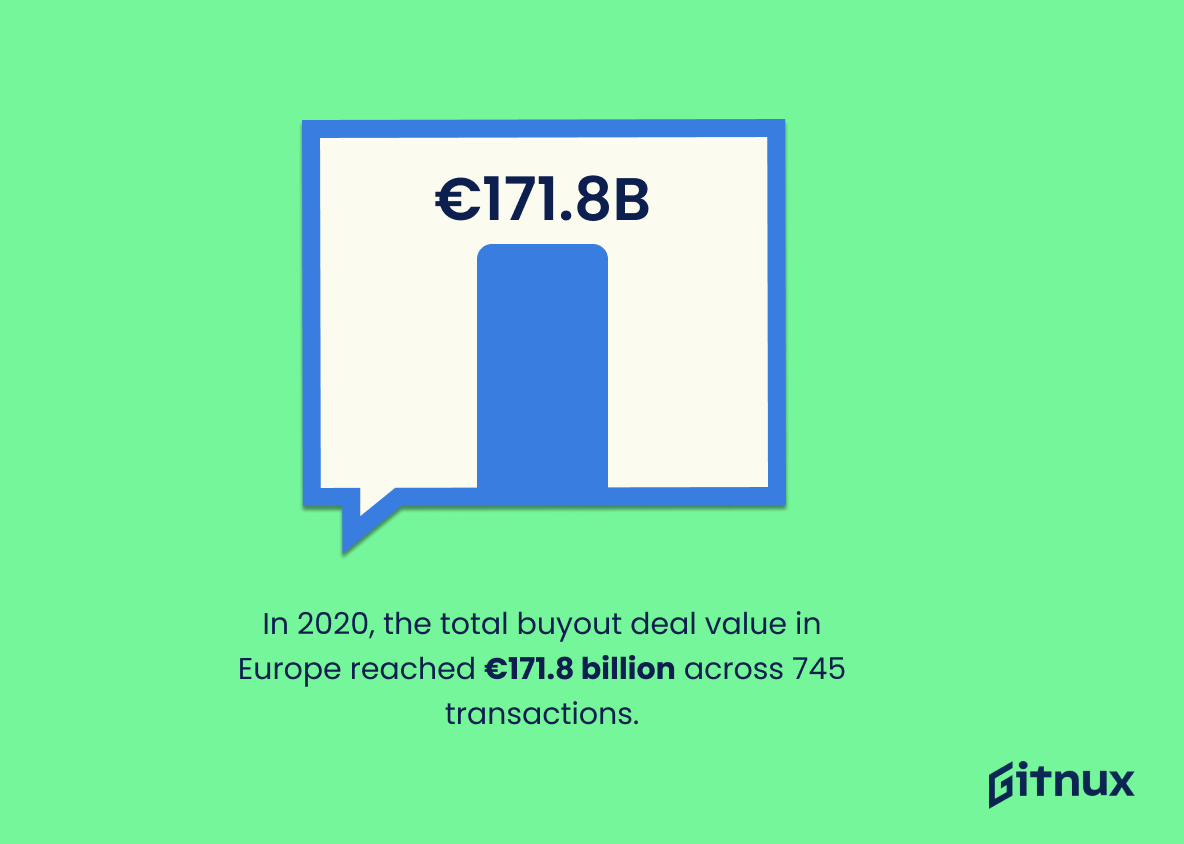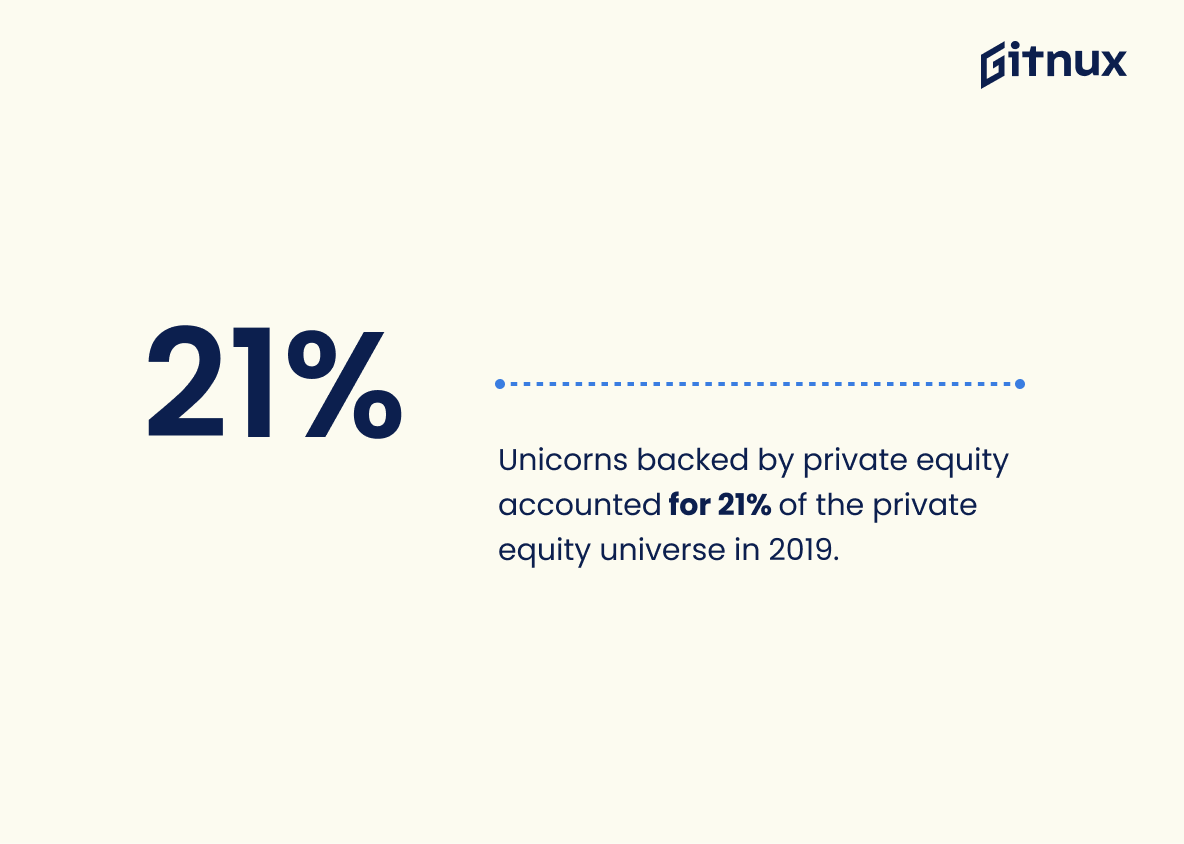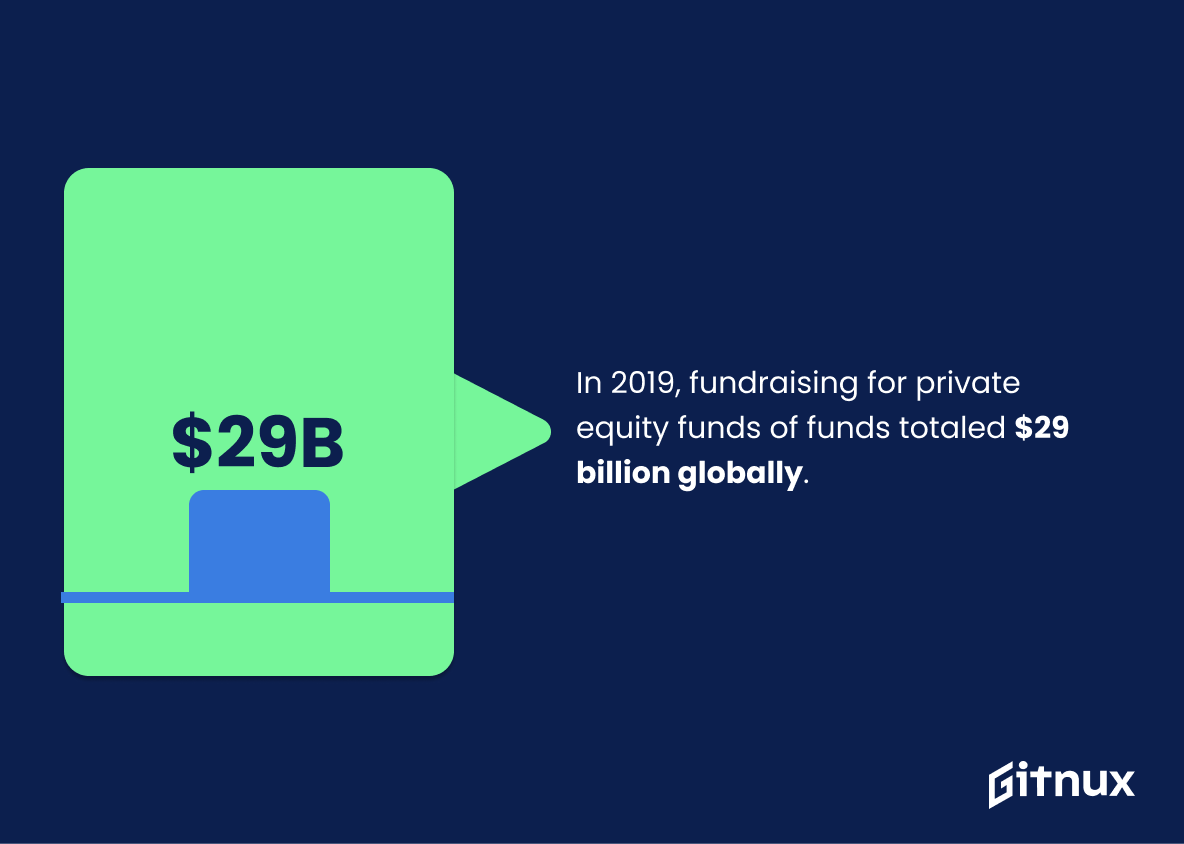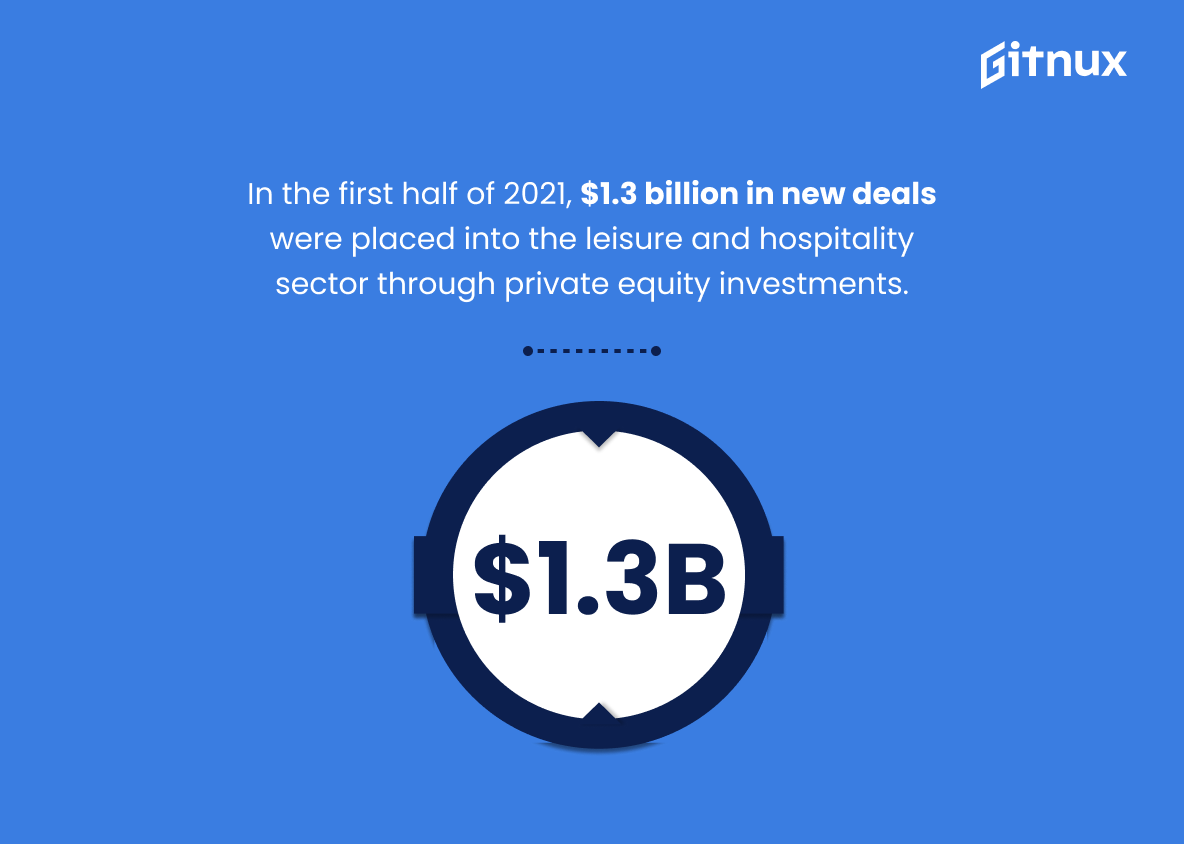In the fluctuating world of finance, the private equity industry has always been a remarkable point of attraction for many savvy investors. But how well do we truly understand this complex landscape?
This blog post will dive deep into the heart of the private equity sector, unraveling and dissecting pivotal statistics and trends that are shaping the industry. Whether you’re an investor, fund manager, financial enthusiast, or simply curious to enhance your knowledge, this comprehensive guide to private equity industry statistics promises to illuminate the fascinating inner workings of this financial giant.
The Latest Private Equity Industry Statistics Unveiled
In 2020, the global private equity industry reached an all-time high of $4.5 trillion in assets under management (AUM).
As if giving a standing ovation to the private equity industry’s resilience and growth potential, 2020 unfurled a remarkable milestone, snowballing the sector’s assets under management (AUM) to a record-breaking $4.5 trillion globally. Illuminating the sheer magnitude of the industry, this statistic serves as a testament to the unflagging confidence of investors, amplifying the Private Equity sector’s prominence as an irreplaceable cog in the engine of global finance.
Sewn into the fabric of the blog post, this figure not only accentuates the increasing significance and sophistication of this investment strategy but also lends further credibility and context to the discussions around industry trends. Casting a resplendent glow on the industry’s great strides, it can draw readers’ attention to the appeal and potential profitability of private equity, reshaping their perceptions of the sector.
Moreover, in the numbers game, this statistic acts as a powerful beacon, signaling the industry’s vibrancy and robust performance, even in the face of economic volatility. It links subtlety but significantly to the narrative about the pivotal role of private equity in steering investments, instilling renewed optimism about the sector’s future.
Private equity investment in the US in 2020 was approximately $699 billion.
Delving into the thrilling realm of private equity industry statistics, one cannot gloss over the staggering figure of $699 billion that marked private equity investments in the US during 2020. This colossal amount serves not just as a testament to the robustness of the industry, but illuminates the dynamic role of private equity in powering economic growth.
The figure offers an intriguing glimpse into the resilient confidence investors bestowed upon private equity, amidst the unforeseen circumstances in the year 2020. Equally noteworthy is the underlying message of potential and opportunity this number poses for prospective investors and stakeholders. It essentially sets the stage for future narrative on how the sector could evolve, functioning as a pivotal reference point for trend analyses and forecasts.
The technology sector received the largest share of private equity investments with about $1.6 trillion in 2019.
Highlighting the monumental $1.6 trillion private equity investments that flowed into the technology sector in 2019, underpins a crucial trend drawing the financial narrative of the Private Equity Industry. This figure in fact, stands as a testament to the dynamic shifts occurring within investment landscapes, emphasizing a major thrust towards digital revolution and innovation. Contextualized in a blog post about Private Equity Industry Statistics, it paints a vivid picture of how industry leaders are investing heavily in tech-based firms, thus shaping the future.
Such a statement reinforces the value and potential believed to be held in the technology sector, and effectively captures the strategic direction of global finance. It also provides perspective to investors, companies, and stakeholders about the most sought-after sectors, influencing decision-making and future trends. Finally, it subtly hints towards the direction where new opportunities might be emerging for entrepreneurs, startups and innovators.
As of 2020, there are more than 5000 active private equity firms worldwide.
Delving into the world of Private Equity Industry and its intricacies, the compelling narrative of more than 5000 active private equity firms across the globe as per the 2020 data acts as a dynamic reflection of the massive expansion and influence in this sector. Sparking conversations over the ballooning landscape, it ignites a profound understanding of the competitiveness and opportunities this industry encapsulates.
Not only it sheds light on its widespread nature, but it also gives an insight into the vast pool of investment avenues it provides. The very proliferation of these firms in numbers evinces the increasing confidence of investors and their shift towards this bustling market, making way for a deeper exploration and discussion of this industry in the blog post.
EMEA (Europe, Middle East, and Africa) holds just 11% of the total global PE AUM as of 2020.
The allure of the statistic—EMEA comprises merely 11% of the global Private Equity Assets Under Management (PE AUM) as of 2020—lies in its remarkable insight into the geographical distribution of PE investment power. It paints a compelling image of the potential untapped investment market in EMEA while simultaneously underscoring the dominance of other regions, likely North America and Asia, in the PE industry.
Drawing from this, one might infer the presence of market dynamics and regulatory scenarios more conducive to the growth of PE funds in regions outside EMEA. Moreover, this minimal percentage might provoke further investigation into factors such as EMEA’s investment climate, investor sentiment, and the industry structure, influencing its relatively smaller slice of the global PE AUM pie.
Not to mention, this statistic may serve as a crucial touchpoint for industry stakeholders, from PE fund managers developing their global expansion strategies to policy makers in EMEA aiming to make the region more attractive for PE investments. Moreover, it contributes valuable context to any discussion on the future trends and potential shifts within the global Private Equity landscape.
Private equity firms in the U.S. invested over $800 billion in more than 4,700 US-based companies in 2019.
This striking revelation of US Private Equity firms investing over $800 billion in just 2019 offers profound insight into the dynamism and high potential of the private equity industry. Discussing over 4,700 US-based companies benefitting from such investment plots a vivid picture of the industry’s contribution to economic growth, job creation, and innovation.
It highlights not just the raw financial might of the private equity sector, but also the sheer diversity and abundance of businesses that it supports. Such a vibrant statistic underscores the industry’s pivotal role in the American economy and its essential value in transforming fledgling businesses into substantive market players.
In 2020, the total buyout deal value in Europe reached €171.8 billion across 745 transactions.
Illuminating financial trends within the sphere of Private Equity Industry, the remarkable 2020 statistic of €171.8 billion generated from 745 buyout deals across Europe paints a vivid picture of the industry’s robust performance despite global economic uncertainties. This noteworthy figure serves as a testament to the resilience and vigor of the European Private Equity landscape.
As if bearing the standard of significant industry happenings, it ripples across deep waters of private equity insight by offering potential investors, analysts, and industry observers a crucial compass of regional investment dynamics, deal flows, and overarching investment strategies, setting the bench for future industry analysis and forecasting.
Unicorns backed by private equity accounted for 21% of the private equity universe in 2019.
Navigating the vast cosmos of the private equity industry, one statistic twinkles brightly like a celestial beacon, effortlessly capturing attention. The proportion of Unicorns – those elusive billion-dollar startups – with private equity backing reached a significant 21% in 2019. This numerical nugget provides insight into the evolving investment strategies in the sector.
It illustrates the increasing preference of private equity firms for high-growth, high-risk opportunities, aiming at game-changing payouts. It also underscores the crucial role private equity plays in fueling innovation and propelling market-disrupting companies, a theme that resonates through modern venture capitalism. Most importantly, it’s a barometer of the industry’s appetite for risk, a parameter of mounting relevance in a volatile, unpredictable economic climate.
In 2019, fundraising for private equity funds of funds totaled $29 billion globally.
Unveiling a compelling financial saga, the monetary triumph of private equity funds of funds in 2019 reached a staggering $29 billion on a global scale. This financial feat truly underscores the vibrancy and indomitable resilience of the Private Equity industry, acting as a testament to sustained investor confidence in this asset class. Regarded as a beacon of robust performance and persistent value creation, this statistic reflects a thriving breeding ground for dynamic investments.
Amid a blog post discussing Private Equity Industry Statistics, such an outstanding capital commitment serves as a potent emblem of the industry’s potential, outlining the significant role of funds of funds in pooling capital. In essence, this numerical nugget brings the vibrant tapestry of private equity’s economic impact into sharp focus, enabling readers to assess the sector’s scale, influence, and ongoing evolution.
In the first half of 2021, $1.3 billion in new deals were placed into the leisure and hospitality sector through private equity investments.
Embarking on the journey of exploring the complexities of the Private Equity Industry Statistics, it’s like plunging into a sea filled with high tides and tantalizing tranquility. In this ocean of figures and facts, one significant swell that catches our attention is the $1.3 billion new deals that inundated the leisure and hospitality sector in the first half of 2021.
Such a tantalizing torrent of capital is a beacon of interest in our exploration. Likened to a grand ship braving through the otherwise turbulent market waves, it embodies the confidence and interest of the private equity investors in this sector. The robust torrent of investments signals a promising horizon for the leisure and hospitality industry, portraying a healthy and vibrant investment climate amid the ongoing global economic transformations.
Furthermore, it exemplifies the buoyant resilience that the leisure and hospitality sector has showcased, especially in these challenging times marked by the global pandemic. Rightly so, this numeric navigator serves to illustrate just how the winds of the economic storm have failed to cloud the private equity scene – instead, carving out investable opportunities for those illustrious enough to seize them.
In essence, this captivating current of statistics presents a dual tale of triumph – one of the leisure and hospitality sector sailing through amidst the storm, and second of the private equity ventures bold enough to helm such investments.
In Q2 2021, the US private equity-backed buyout deals reached $450.25 billion, a 91.8% growth from the previous quarter.
Bearing the torch for the vitality of the Private Equity Industry, the monumental figure of $450.25 billion in buyout deals marks a new chapter in the realm of US private equity in Q2 2021. This not only represents a dramatic 91.8% surge from the previous quarter, but also paints a vivid picture of a rapidly expanding and evolving industry.
The stormy growth rate itself reflects an enthusiastic response from investors, seeking profitable outlets in these uncertain economic times. This resounding figure, in essence, attests to the enticing allure of private equity, outpacing other investment vehicles and shouldering a hefty share of capital in today’s investment landscape. Therefore, it serves as a statistical beacon for industry professionals, investors, and general statistics enthusiasts alike.
Globally, private equity-backed exits peaked in 2015, at 1,494.
Illuminating a stellar era in the private equity landscape, the apex of private equity-backed exits worldwide came into view in 2015, being recorded at an astonishing 1,494. This pinnacle puts into context the dynamism of the private equity industry during that period, indicating a high degree of successful investments, which were ripe for exits, thereby enabling savvy investors to cash in on their investments.
Moreover, it sets a worthy benchmark against which recent trends and future projections in the industry can be measured. Therefore, it is a crucial reference point for any comprehensive analysis of the industry. Whether an industry veteran or a newcomer, it paints an elaborate picture of the industry’s success potential and its cyclic dynamics.
In 2020, the Latin America private equity landscape grew by 21% reaching $31 billion.
Highlighting a growth of 21% to $31 billion in the Latin American private equity landscape in 2020 offers an illustrative measure of the vibrancy and dynamism characterizing the region’s private equity industry. It acts as a quantitative testament to the market’s resilience and potential amidst a volatile global economic scenery.
This impressive growth trend is a beacon, not just for investors seeking new opportunities, it also signals the maturing of the Latin American economic canvass ready to accommodate, nurture, and optimize high-value investments. Hence, it’s a bellwether within the global private equity ecosystem, signifying previously untapped territory that’s now brimming with possibilities.
In Q2 2021, biotech & healthcare accounted for the biggest chunk of private equity funds’ investments in Europe, totaling €12 billion.
Reflecting on the noteworthy financial activity captured in Q2 2021, the substantial €12 billion investment in the biotech & healthcare sectors in Europe gives us a riveting narrative of private equity fund strategies. This splurge on healthcare and biotech industries not only signals the sectors’ appeal to investors, but also illustrates the dynamically shifting investment paradigms within the private equity landscape.
Unraveling this narrative, it’s clear that the emphasis on biotech and healthcare reveals the potential these sectors hold in terms of their growth prospects, demonstrating them as apparent investment hotspots. Moreover, this could be a manifestation of investors steering capital into sectors projected to thrive in a post-pandemic world. While the lasting economic turmoils are still reverberating, the spotlight on these sectors could be investor optimism materializing in function to recovery prospects.
The echoes of this massive investment resonate through the complexities of the private equity ecosystem, painting an insightful picture of the industry’s health, adaptive strategies and the shifting trajectories of investment focus. It is indeed a pivotal indicator that marks significant trends, influencing future investment decisions and shaping the course of the private equity industry in Europe.
Conclusion
In conclusion, the private equity industry has continuously proven to be a significant driver of economic development and corporate growth. Latest statistics reflect an industry in good health, showing strong returns, increasing investments, and consistently attracting global interest.
Notwithstanding certain challenges and market fluctuations, private equity firms continue to find innovative ways to generate added value. As more investors recognize the potential for higher returns, the private equity industry is likely to maintain its upward trajectory in years to come. Stay tuned to our blog for more updates and insightful data on this fast-evolving industry.
References
0. – https://www.www.businesswire.com
1. – https://www.www.refinitiv.com
2. – https://www.www.pionline.com
3. – https://www.www.bcg.com
4. – https://www.www.cfasociety.org
5. – https://www.www.prequin.com
6. – https://www.www.preqin.com
7. – https://www.www.ey.com
8. – https://www.www.statista.com
9. – https://www.lavca.org
10. – https://www.www.spglobal.com
11. – https://www.www.mckinsey.com


